How to Share a Wi-Fi Password on iPhone, Mac, and Android
Setting up Wi-Fi between devices takes less than a minute.
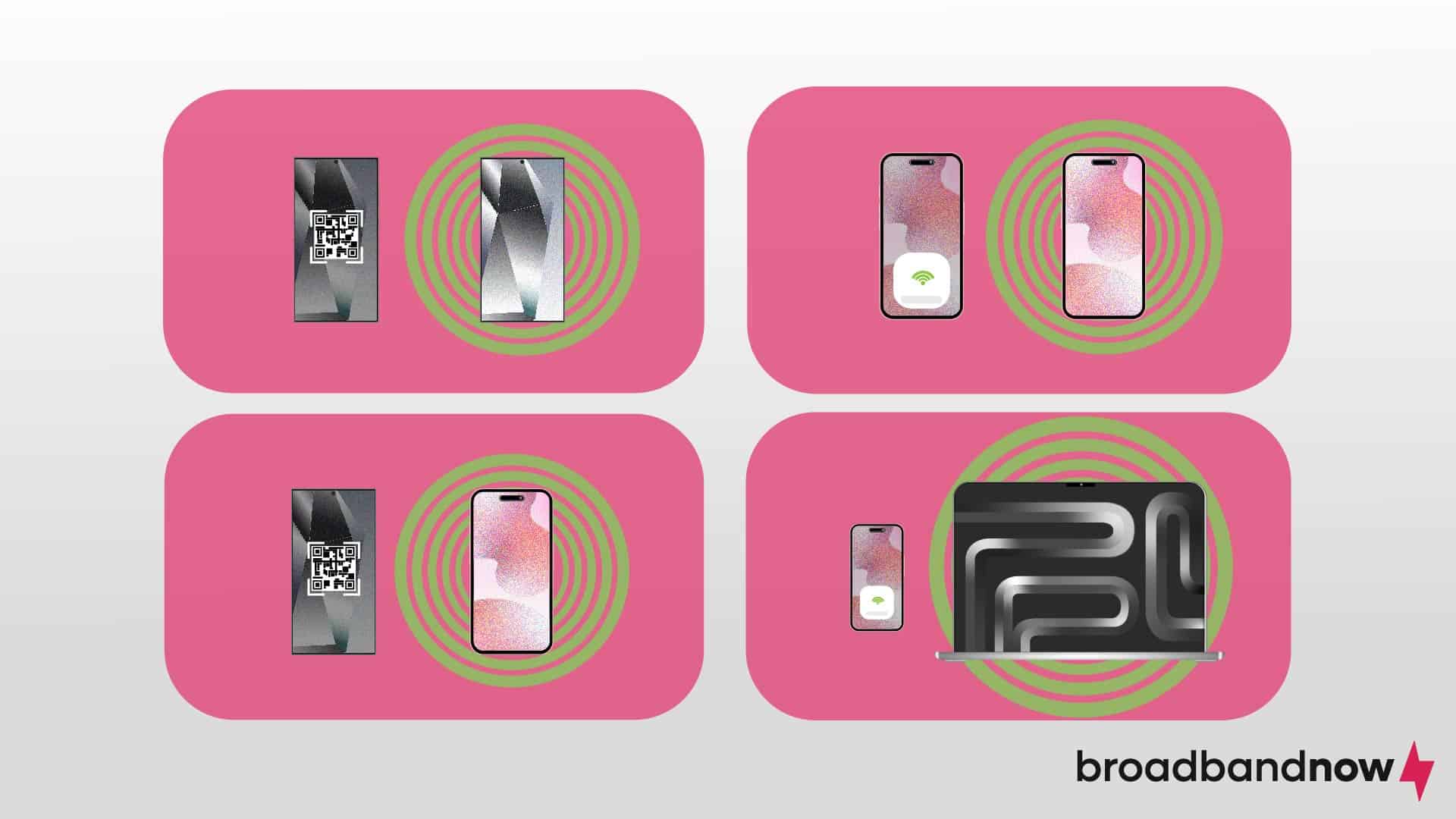
- Apple devices make Wi-Fi password sharing easy using the Internet Sharing settings associated with these devices.
- Android users can share Wi-Fi passwords by generating QR codes, which requires you to access your network details, generate a QR code, and scan it to connect.
- Generating a QR code is a necessary step for sharing passwords across iOS and Android devices.
Whether at the office or at home, someone will most likely ask you to share your Wi-Fi password so they don’t have to use their mobile data. Sharing complex passwords verbally can be inconvenient, and giving out your password isn’t secure. The easiest and safest way to share a Wi-Fi password is via your device. Read on to learn how to share Wi-Fi passwords through an iPhone, Mac, and Android.
Sharing Your Wi-Fi Password
- Set Up Devices Before You Start
- iPhone to iPhone
- Mac to iPhone
- Android to Android
- iPhone to Android
- Risks of Sharing Wi-Fi Passwords
Set up Devices Before You Start
Follow these steps to ensure the device is properly set up for Wi-Fi:
- Turn off personal hotspots on both devices.
- Turn on both devices’ Wi-Fi and Bluetooth. If you run into issues with your Wi-Fi network, troubleshooting Wi-Fi should be easy. In some cases, restarting the devices and reconnecting to the network can solve the problem.
- Make sure both devices are within Wi-Fi and Bluetooth range.
iPhone to iPhone
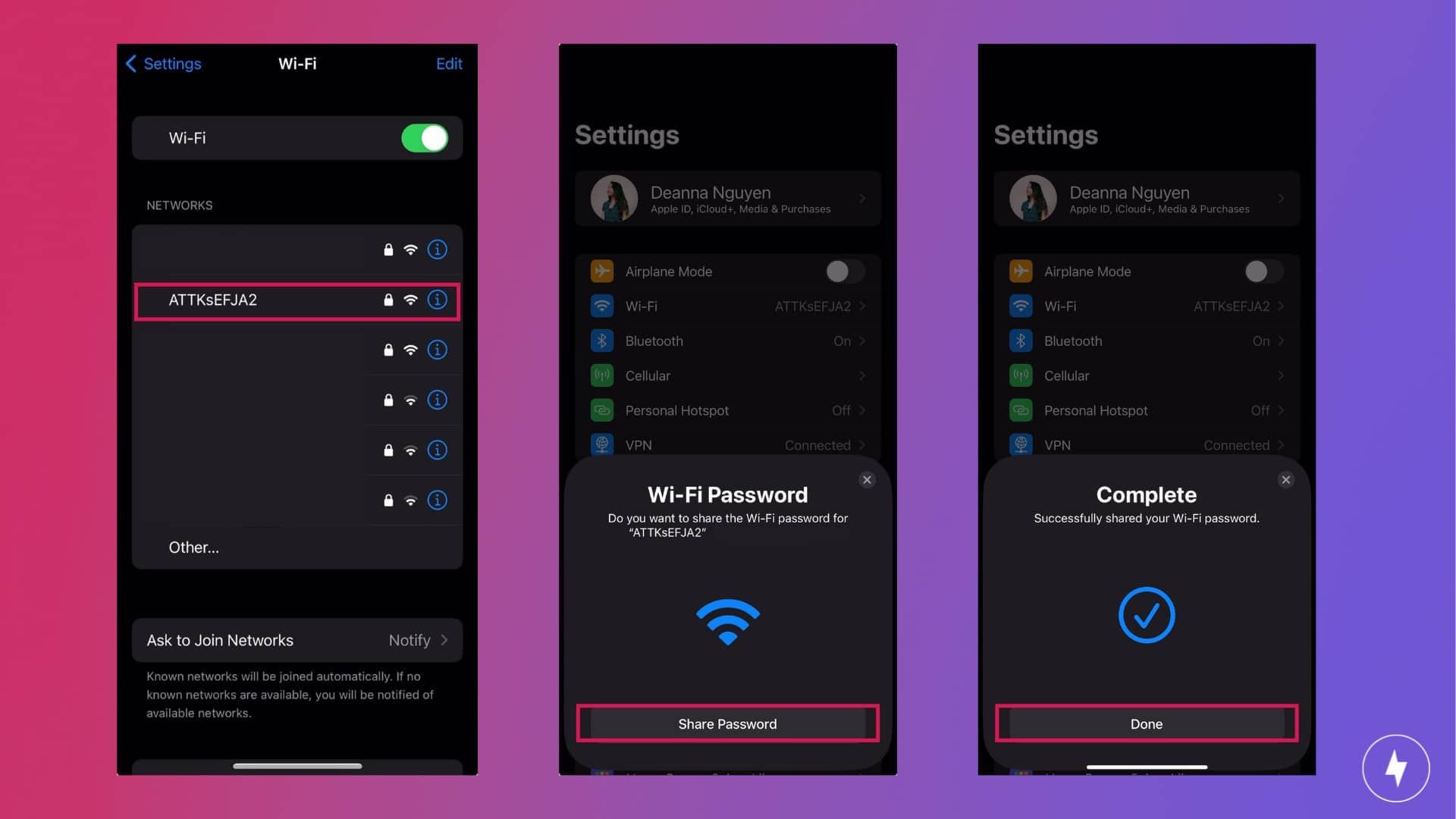
While straightforward, sharing the Wi-Fi password from one iPhone to another requires some steps. Before you start, make sure both iPhones have the latest iOS software update. If they’re both up to date, follow these steps:
- Add each other to Contacts via Apple ID email addresses.
- Go to Settings.
- Tap on Wi-Fi.
- Tap the correct Wi-Fi network.
- Wait for the Wi-Fi Password pop-up to appear on the other iPhone.
- The other iPhone user should then tap Share Password.
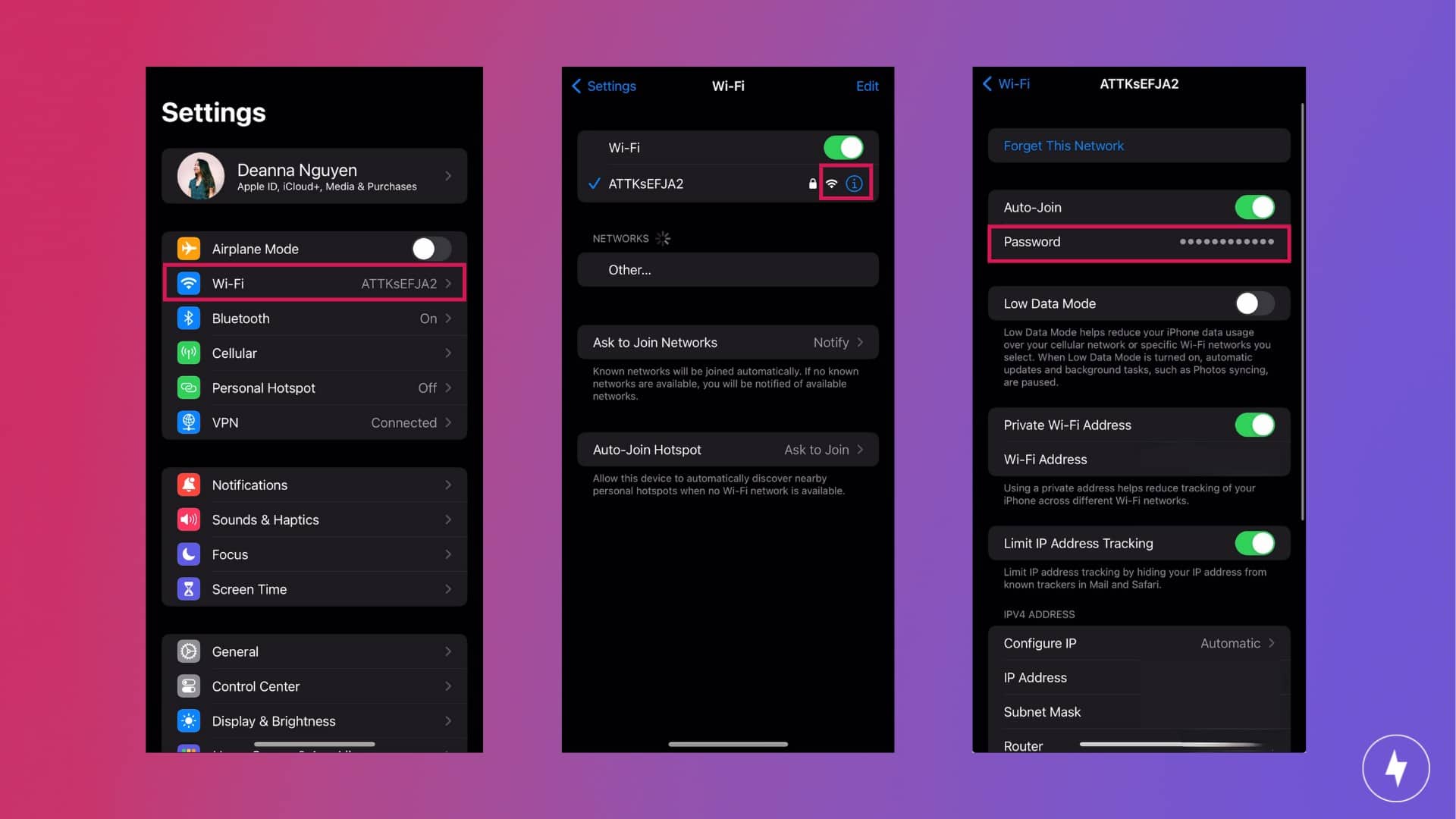
If that doesn’t work out, the person sharing the Wi-Fi password can follow these alternative steps:
- Go to Settings.
- Tap on Wi-Fi.
- Tap the info icon next to the Wi-Fi symbol of the correct Wi-Fi network.
- Tap the password to reveal it.
- Copy the password.
- Text or show the password to the other iPhone user.
Check out our video and follow along with all the steps on how to share your Wi-Fi from iPhone to iPhone:
Mac to iPhone
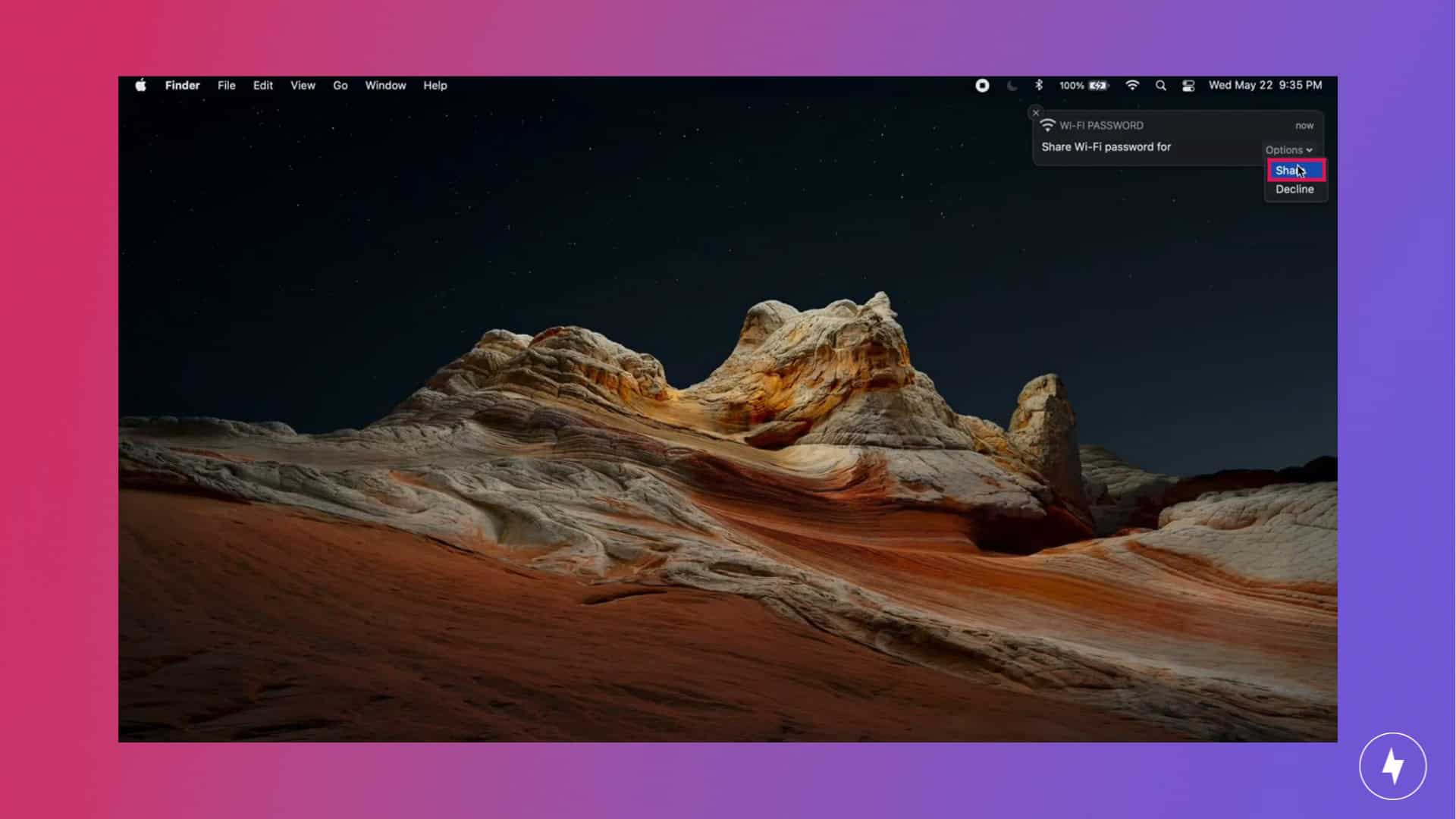
Apple makes sharing Wi-Fi passwords between its devices quick and straightforward as long as they have the latest iOS, iPadOS, and macOS versions. The process is similar to sharing Wi-Fi between iPhones:
- Add each other to Contacts via Apple ID email addresses.
- For the Mac user, click on the Wi-Fi symbol at the top right of the taskbar.
- Click on your Wi-Fi network.
- Click on Options and then Share.
- For the iPhone user, go to Settings and then Wi-Fi.
- Tap on the correct Wi-Fi network and wait for the password to be shared by the Mac user.
Android to Android
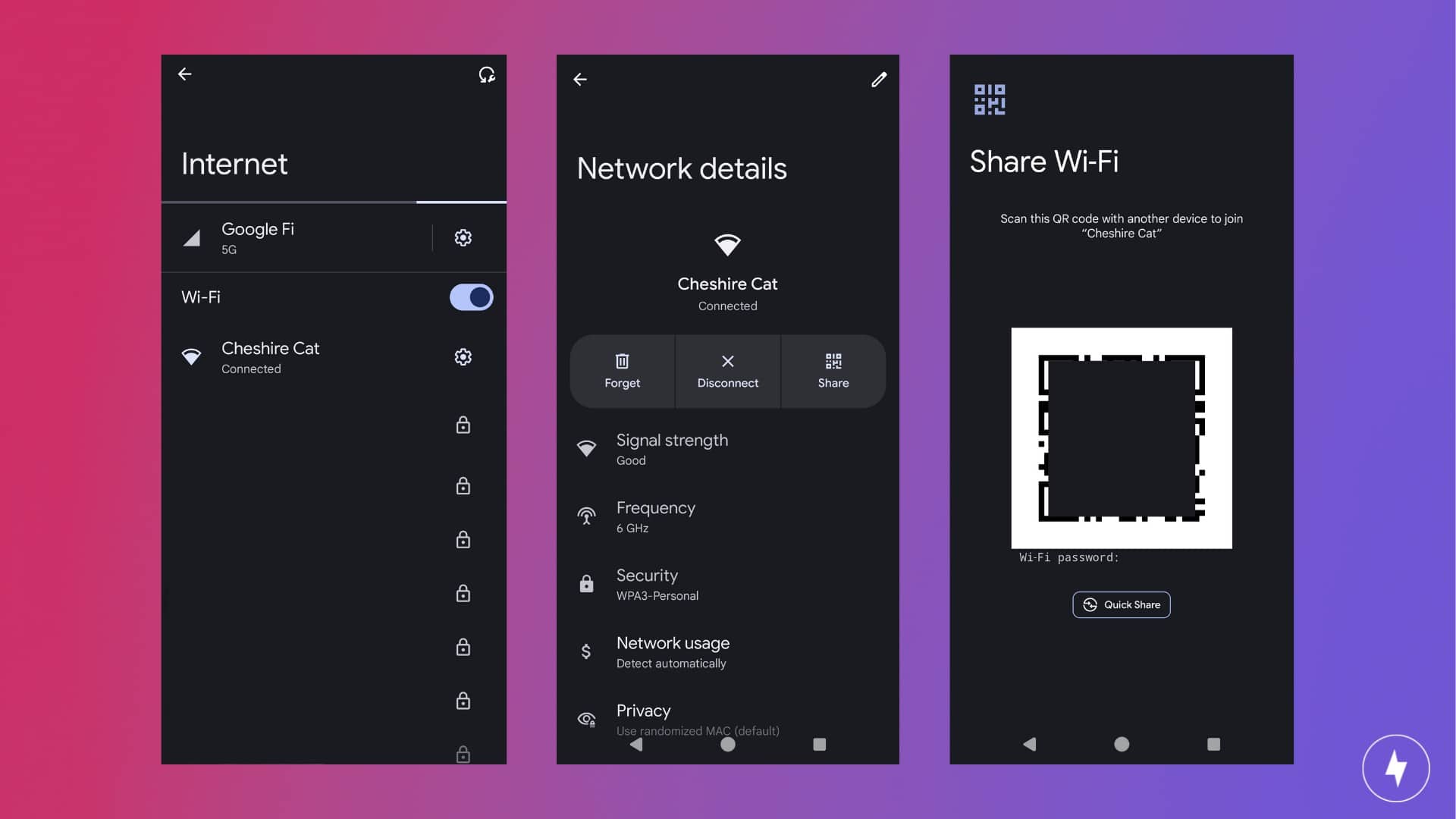
Sharing a Wi-Fi password from an Android device is slightly more involved, but it’s not difficult. You’ll need to generate a QR code, which you can do using the built-in or third-party QR code scanner. Here are the steps:
- Navigate to Settings.
- Tap Network & Internet.
- Tap Internet. It will have the name of your current network underneath.
- Tap the cog symbol next to your Wi-Fi network name.
- Tap Share. If prompted, verify your identity using a fingerprint or your security pattern.
- Scan the QR code on the screen using the phone or tablet trying to connect.
iPhone to Android
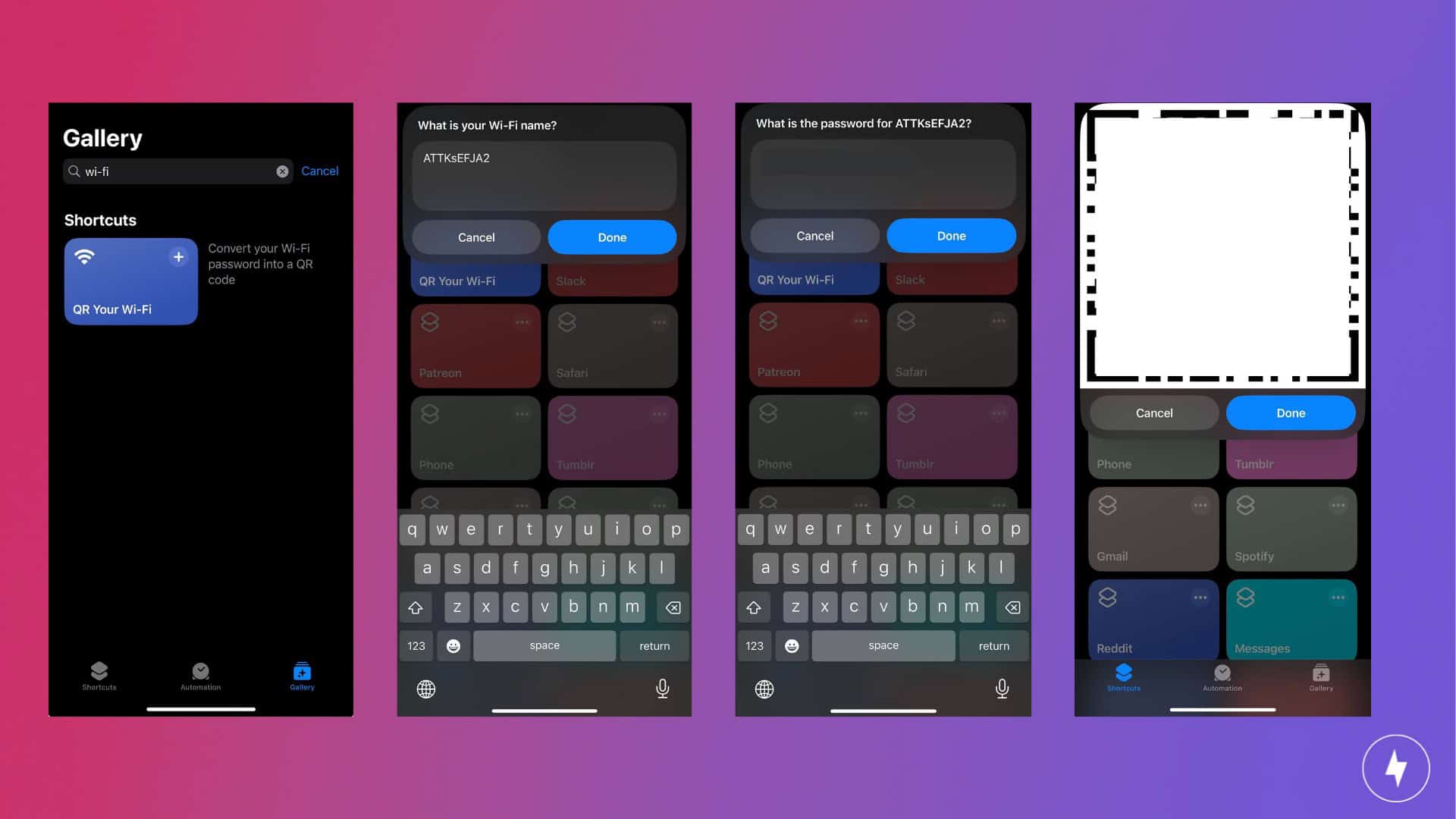
If you have to share a password between iPhone and Android, you’ll need to generate QR codes. If you’re an Android user sharing the Wi-Fi password, you’ll follow the same steps as you would for another Android device. The iPhone user will scan the QR code using the camera app. As for iPhone-to-Android Wi-Fi password sharing, follow these steps:
- Find the Shortcuts app.
- Tap on the Gallery tab.
- In the search bar, find and add the QR Your Wi-Fi shortcut.
- Go to Settings and Wi-Fi.
- Tap the i icon next to your Wi-Fi network.
- Copy your Wi-Fi password.
- Go back to the Shortcuts app.
- Tap on the Shortcuts tab.
- Tap on QR Your Wi-Fi.
- Type in your Wi-Fi network name if it’s not already automated and tap Done.
- Paste your Wi-Fi password and tap Done.
- The QR code will pop up on the screen for the Android user to scan.
Risks of Sharing Wi-Fi Passwords
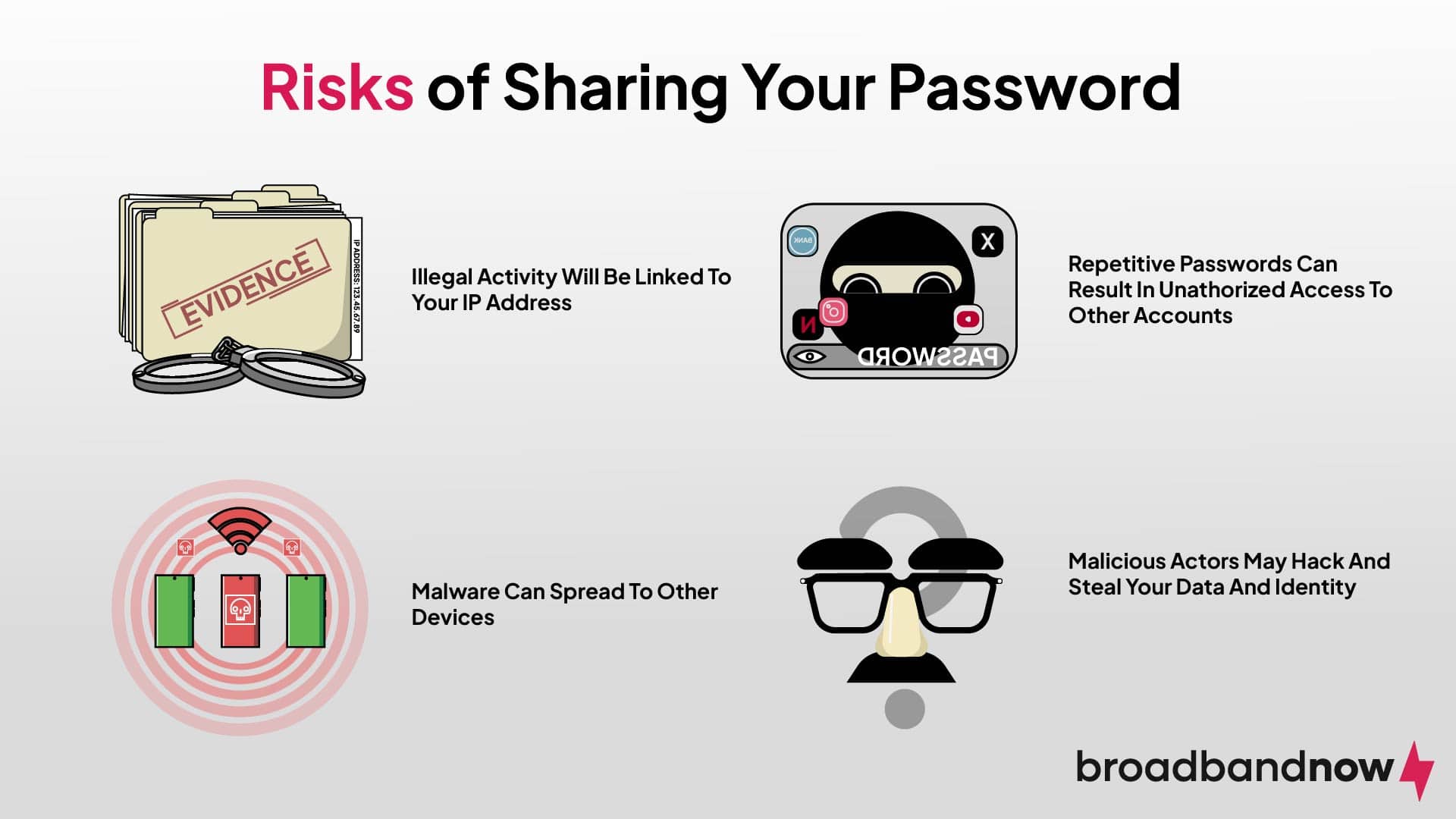
Although sharing Wi-Fi is unavoidable at times, you should be aware of the security and data privacy risks:
- If someone commits illegal activities on your network, which has a unique IP address, you could get into trouble with authorities.
- A device with a strain of malware can spread the malware to other devices on the network.
- If you use the same password for other accounts, you may have unauthorized access to those accounts.
- If a malicious actor gets on your network, they can hack into your device to steal data, including your identity.
It’s best to proceed with caution when sharing your password and securing your home Wi-Fi network to minimize security threats. If a malicious actor is able to infiltrate the network, they can use your Wi-Fi to perform illegal downloads. If you have an internet cap, they can use up that data, leading to additional charges. In some cases, a hacker can gain unauthorized access to your network or device to steal personal data or spread malware on your devices.